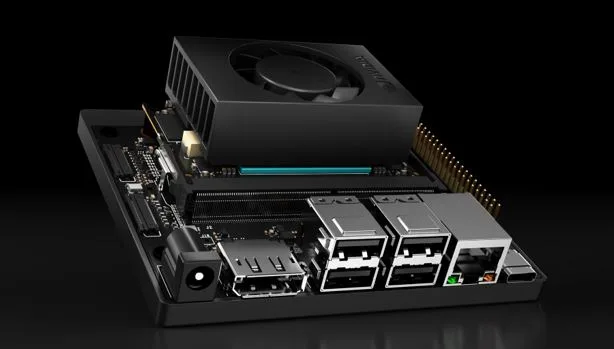The Role of Jetson Orin Nano in Enhancing Modern Embroidery Machine Technology
The embroidery industry is experiencing a huge revolution. Traditional mechanical systems are fast being replaced by advanced human-AI-powered solutions. At the heart of this evolution is Jetson Orin Nano. Which is NVIDIA’s powerful edge computing platform now integrated into modern embroidery machines. This combination offers unprecedented speeds, design complexities and on-the-fly customization.
But how exactly does AI reshape embroidery, and why is this technology becoming essential for manufacturers? Let’s explore.
Intelligent Automation in Embroidery: The Role of Jetson Orin Nano
The Jetson Orin Nano is designed to deliver powerful AI performance in compact form factors, making it an ideal solution for integrating into industrial embroidery machines. Featuring up to 40 trillion operations per second (TOPS) of AI processing power, it empowers embroidery systems with the capacity to process large design files, perform real-time pattern recognition and accommodate high-speed stitching operations with ease.
Modern embroidery machines equipped with Jetson Orin Nano can automatically adjust stitching precision based on fabric texture, thread density, and design complexity. Traditionally, these adjustments required manual intervention – a long and error-prone process. Today, the role of intelligence algorithms is to process camera and sensor data and make real-time decisions to guarantee quality results.
For example, high-end industrial embroidery machines can use embedded vision systems powered by Orin Nano to inspect every stitch in real-time. Thread breaks, misalignment and skipped stitches are flagged immediately, minimizing wastage and ultimately optimizing production efficiency.
According to market data, manufacturers of textile machinery using AI-driven automation have reported as much as 25% lower material waste and a 30% faster production cycle than traditional production systems.
Incorporating Customization and Personalisation in Embroidery Designs:
The demand for customized apparel and personalized textile products is growing in the embroidery market. Consumers are demanding new and unique designs at a high quality and rapid turn times, and manufacturers require new solutions to fulfill these requirements. The integration of Jetson Orin Nano into embroidery machines makes this possible by enabling real-time rendering and execution of complex designs.
AI-enhanced processing enables machines to process large vector based files and optimize them for accurate stitching without sacrificing speed. For example, a factory that specializes in embroidery for custom sports apparel can now process thousands of custom customer designs a day, with the computational power of Orin Nano-based systems.
Moreover, these machines can be programmed with customer preferences and design templates for seamless replicating of individual orders. Combined with advanced embroidery machine capabilities, the technology supports on-demand production, reducing lead times and boosting customer satisfaction.
According to some accounts, companies that provide AI-enabled personalization are seeing trademark growth rates of up to 40% in customer retention-offering clever and quickly produced personal designs that will remain perpetually new.
Predictive Maintenance and Quality Control via Integration with AI:
One of the significant advantages of embedding Jetson Orin Nano into embroidery machines is its role in predictive maintenance and quality management. In conventional embroidery systems, there is a recurring problem of unplanned down-time that results from a lack of thread tension, mechanical wear or needle malfunction. By leveraging AI-based analytics, embroidery machines can now predict potential failures before they occur.
Built-in sensors capture information from the machine and feed it to Orin Nano’s processor that analyzes vibration signature, temperature changes, and machine speeds. Machine learning algorithms find early indicators of component wear and warn operators of the need to run preventative maintenance. According to industry reports, predictive maintenance using AI can lead to a reduction in machine downtime by as much as 45% and an increase in equipment lifetime by 20%.
Furthermore, AI-enhanced embroidery machines are capable of maintaining stringent quality standards. Orin Nano’s real-time image processing, together with integrated cameras, guarantees reliable stitch quality over production batches. In addition, any inconsistencies are automatically corrected during operation, requiring a minimum of human intervention and guaranteeing equal product quality.
Smart Textile Manufacturing and Edge Computing: The Convergence
The fusion of Jetson Orin Nano with embroidery machines reflects a broader shift towards smart textile manufacturing. Edge computing makes it possible to process the data directly on the machine without the need of external servers. This local processing ability is especially useful in the field of embroidery, where decisions that take milliseconds can affect stitching accuracy and other design precision.
For instance, large-scale embroidery manufacturers which create thousands of pieces a day can find Orin Nano’s capability to process data in-house, reducing network latency and improving machine efficiency. This type of dynamic control system is particularly useful for facilities operated with complex geometries and different types of material construction, for which real time control is of the utmost importance.
In addition, the compact design and energy efficiency of Orin Nano make it suitable for integration into smaller, portable embroidery machines targeted at small businesses and hobbyists. By democratizing access to AI-powered tools, embroidery start-ups can level the playing field against larger manufacturers and remain the benchmark for precision and efficiency.
Market Trends and Projections:
The global embroidery machine market is projected to reach USD 5.2 billion by 2032, growing at a CAGR of over 5.8%. Likewise, the demand for AI-powered textile manufacturing solutions is expected to speed up exponentially, and edge computing solutions like Orin Nano will play a big role in shaping future growth.
As customer expectations continue to evolve, manufacturers investing in AI-enabled embroidery machines will gain a significant competitive advantage. Through the integration of innovative computing modules onto embroidery systems, personalization efforts can be accelerated, personalized clothing can be made, and sustainable production processes can be supported.
Additionally, ongoing advancements in neural network acceleration, multi-camera support, and high-speed I/O capabilities of Jetson Orin Nano are expected to unlock new possibilities for automation and smart manufacturing in the textile sector.
Conclusion:
The integration of Jetson Orin Nano into modern embroidery machines represents a major step in textile manufacturing innovation. From intelligent automation to predictive maintenance and from personalization to quality control, this fusion of AI and precision engineering is transforming the industry.
As the busy world demands personalized embroidery, manufacturers embracing the capabilities of AI-powered edge computing platforms shall spearhead the change towards quicker, smarter, and more effective manufacturing systems.






